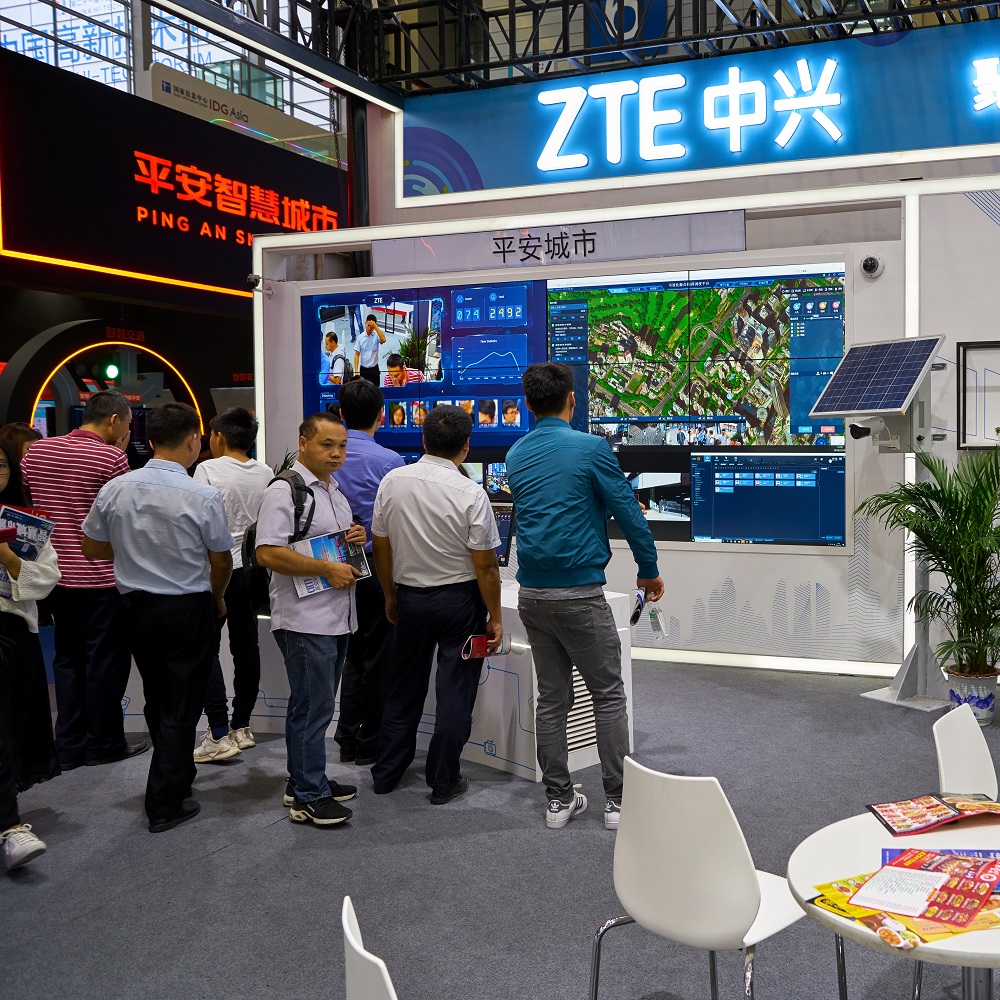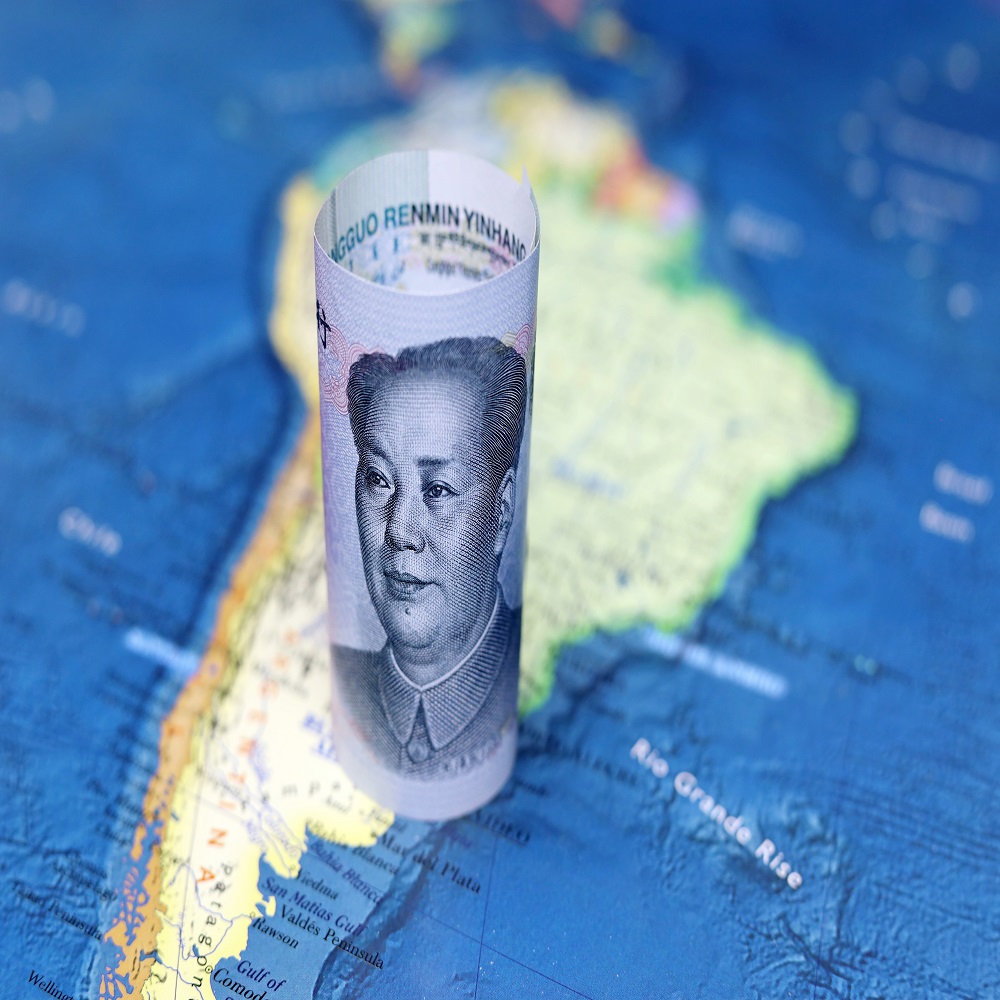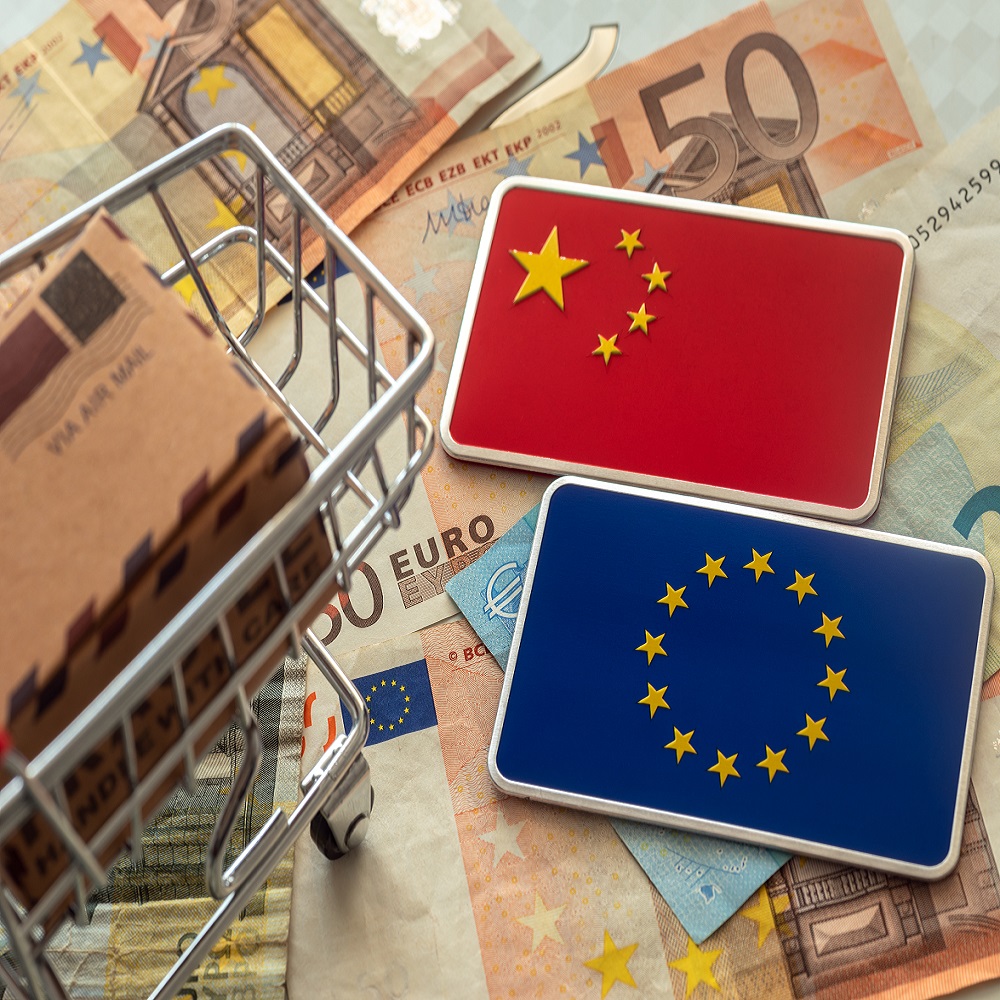
What should Europeans do about the U.S.-China Rivalry in key strategic technologies?
by Roberta Haar , Hengyi Yang
한국어로 읽기Leer en españolIn Deutsch lesen Gap اقرأ بالعربيةLire en françaisЧитать на русском In October 2023, the EU Commission identified four technology fields as critical: advanced semiconductors; artificial intelligence (AI); quantum, and; biotechnologies.[1] All four areas are greatly impacted by the U.S.-China rivalry in technology, making it essential for Europeans to understand the Sino-American competition. This article examines this rivalry from the Chinese and U.S. perspectives. It recounts their prevailing attitudes, which are shaped by recent events, and that, in turn, mold Chinese and American strategic approaches. From the Chinese policymakers’ perspective, its geo-technological competition with the U.S. is novel and passively learned. During Xi Jinping’s first term, the Chinese government still positioned technology under the economic-oriented strategy of innovation-driven development. This stance followed the idea that ‘science and technology constitute a primary productive force’ and the ‘peaceful development’ principles set during Deng Xiaoping’s era. However, around 2018, two sanctions incidents that targeted Chinese telecommunications giants shifted Chinese leaders’ understanding of tech strategy into the geopolitical context. The first sanction incident involved ZTE, China’s second-largest communications equipment manufacturer. In 2016, the Barack Obama administration accused ZTE of selling telecom equipment containing American chip technology to Iran, which violated U.S. sanctions. In 2017, ZTE pleaded guilty and paid a fine of $1.2 billion. However, in 2018, Trump’s government stated that ZTE did not comply with the settlement agreement, coupling previous sanctions with export controls on ZTE in April 2018. The second incident involved Meng Wanzhou, then Vice-Chairwoman and CFO of the Chinese telecommunications giant Huawei, who was arrested in Vancouver, Canada, during a layover in December 2018. Her detention was at the extradition request of the Trump administration, which levied charges related to alleged violations of U.S. sanctions against Iran. These included bank and wire fraud and outright violations of U.S. sanctions via a subsidiary called Skycom Tech, which allegedly concealed Huawei’s activities in Iran. The necessity of a strategic adjustment These two incidents caused an uproar in the Chinese media, followed by a surge in public patriotic sentiment. However, for the Chinese government, the impact and significance of the two cases were quite different. The essence of the ZTE case was commercial sanctions, which meant that ZTE violated business norms and deserved economic punishment. The official Chinese government stance was that ‘this is just an individual case of corporate violation.’ Despite this position, the fact that the government was actively involved nonetheless politicized the incident within China. It was Xi Jinping himself who negotiated with Trump to save ZTE from bankruptcy after which ZTE became a state-owned enterprise with absolute state control—a move that ultimately resulted in ZTE gaining a greater domestic market share than Huawei. At the international level, the top-level nature of negotiations prevented the ZTE incident from overly politicizing then-ongoing trade frictions between the U.S. and China. While the ZTE episode was resolved with little rancor, Chinese senior officials became concerned about the impact that the U.S. might have on China’s strategic technology companies.[2] In November 2018, Tan Tieniu, then Deputy Secretary-General of the Chinese Academy of Sciences, reported to China’s top leaders that they should learn from the ZTE incident. They should avoid overreliance on imports of core electronic components and chips, and they should not repeat mistakes made by ZTE. In the same month, Xi Jinping mentioned in a speech that ‘internationally, advanced technology and key technology is more and more difficult to obtain… forcing us to travel the road of self-reliance.’ Terms like technological security, technology ‘chokepoints’ (卡脖子), and core technologies in key fields (关键核心技术) began to appear frequently in Chinese official discourse. These reflected Chinese leadership’s views about the ZTE incident that were in turn shaping strategic thoughts on the geopolitical technology competition with the United States. It was the Meng Wanzhou incident at the end of 2018 that for Chinese leaders confirmed the necessity of a strategic adjustment. As in the ZTE case, Huawei was involved in a business violation that from the Chinese perspective should have resulted in corporate punishment. Instead, a personal arrest warrant was issued for Meng, thereby escalating a commercial sanction into a political and diplomatic incident. Le Yucheng, then Deputy Minister of Foreign Affairs, urgently summoned the U.S. and Canadian ambassadors to China and issued a stern protest. The Chinese government also arrested two Canadian citizens in China, sentencing one to 11 years in prison. The Chinese Ambassador to Canada wrote that the Meng Wanzhou case was a ‘premeditated political act in which the United States wields its regime power to hunt a Chinese high-tech company out of political consideration.’ Chinese Defensive Deterrence These two episodes shaped and reinforced Chinese leaders’ strategic thinking about its geopolitical technology competition with the U.S. The 14th Five-Year Plan issued by the CCP in 2020 proposed ‘making technological self-reliance’ a strategic goal. Soon all official documents established a new tone for China’s technology strategy based on self-reliance. Previously, China pursued a reassurance strategy, a strategy that showed goodwill towards the U.S. and the system it led. Thus, in theory, China had two strategic options: reassurance and/or deterrence. The former strategy involves showing friendliness towards the U.S. and its allies, thereby releasing tension, and maybe re-joining the U.S.-led system. A reassurance strategy allowed China more time for stable development—the logic of ‘keeping a low profile’ of the Deng Xiaoping era. The Xi Jinping government picked the second option, deterrence, which is to show strength or use countermeasures to reduce the likelihood of further U.S. trade or coercive action. To make a deterrence strategy work, however, Xi further believed China needed to gain strong capacity in key tech fields. Therefore, Xi first mobilized domestic R&D resources and tried to acquire advanced technologies before using diplomatic countermeasures. The core logic underlying this geopolitical technology strategy is one of ‘defensive deterrence.’ A typical example of this strategy in play concerns the semiconductor industry. Facing export controls on semiconductor equipment from the U.S., the Netherlands, and Japan, the Chinese government first increased R&D investment in the sector, trying to overcome ‘chokepoint’ technologies. As a result, China’s investment in semiconductor R&D grew from $10 billion in 2018 to $25 billion in 2022, an increase of 150%. At the same time, the Chinese government increased investment in the production of key raw materials (silicon, gallium nitride, etc.) and semiconductor production bases. It also guided industries upstream while also pushing for downstream integration through policies to improve and strengthen supply-chain security. Chinese policy also moved to increase international supply-chain dependence on China through its comparative advantages in the semiconductor industry (and even other industries) in a hedging move against the U.S. and its allies. For example, in the automotive chip sector, in the supply of vital raw materials, and in the semiconductor equipment markets, China sought to utilize its significant comparative advantages. In August 2023, the Chinese government announced export controls on gallium and germanium, two key materials for manufacturing semiconductors. China Seeking More Regulatory Power But in addition to responding to what was perceived as U.S. containment policies in the area of technology, China’s strategic use of technology followed another approach, one led by the Ministry of Foreign Affairs (MFA) and the Ministry of Industry and Information Technology (MIIT). This third approach sought more regulatory power, for example, in the areas of civilian AI where China has huge potential.[3] Starting in 2018, the Chinese government showed a strong determination to introduce and study AI ethics and technical standards.[4] Based on these domestic framework policies, various diplomatic initiatives, and standards proposals, the MFA and MIIT expanded China’s regulatory influence in the field of AI. For example, the MFA proposed the ‘Global Data Security Initiative’ in 2020 and the ‘Global Artificial Intelligence Governance Initiative’ in 2023. Minister Wang Yi explicitly stated ‘We hope to provide a blueprint for related international discussions and rule-making.’ The China Electronics Standardization Institute, affiliated with the MIIT, also actively participates in the formulation of international new technology standards. Selectively decoupling: U.S. Attitudes and Strategies When it comes to strategic technologies, the Joe Biden administration has generally maintained a stance toward China that aligns closely with the previous administration led by Donald J. Trump. This is especially the case concerning competitive technologies such as 5G/6G, the specialized processors designed to handle the computational demands of AI, quantum computing, and electric vehicles (EVs). Taking a page from U.S. President Ronald Reagan’s Cold War playbook of outspending the Soviet Union, president Biden initiated a $2.25 trillion infrastructure plan. This plan, not unlike China’s policy to increase domestic innovation and strength, allocated funds for sectors such as transportation, manufacturing, renewable energy, clean water, and high-speed broadband for both wired and wireless technologies. The justification for these investments, part of the Build Back Better Act (BBB) policy and later incorporated into the Inflation Reduction Act (IRA) and the Creating Helpful Incentives to Produce Semiconductors (CHIPS) and Science Act, was that they were a response to Xi Jinping’s ambitious goals of doubling China’s economy by 2035, intending to establish China as a global leader in biotechnology, green energy, and AI. In addition to a spending strategy to boost U.S. competitiveness in strategic technologies, the Biden administration continued with some of Trump’s punitive measures. For example, Biden maintained tariffs amounting to approximately $300 billion. He also continued action against Huawei, which has the potential to outcompete in 5G/6G mobile network technology. The Trump administration used the Bureau of Industry and Security to exclude Huawei from global semiconductor supply chains and it placed the company on the Commerce Department’s Entity List, thus requiring U.S. companies to obtain a license before exporting to Huawei. As discussed above, Trump’s executive branch also brought fraud allegations against Huawei’s Chief Financial Officer Meng. While Biden kept in place Trump-era prohibitions on sales of U.S. goods to companies like Huawei, as well as maintaining restrictions on exports of U.S. critical technology, he did quickly resolve the dispute over Meng. Within hours of the deal for her release, the two men caught up in the game of hostage diplomacy left China on a flight back to Canada. Highlighting the political nature of the incident, when Meng returned to China, senior local officials at the airport met her. Encourage Multilateralism to meet Global Challenges Along with strident measures, the Biden administration also sought a more nuanced stance. Indications that suggest a less hawkish approach to China include emphasizing a collaborative approach toward global challenges like climate change and future pandemics. Biden further pushed for engagement in high-level meetings with, for example, Secretary of State, Antony Blinken, and National Security Advisor, Jake Sullivan, who held talks with their Chinese counterparts, Yang Jiechi and Wang Yi, in Anchorage, Alaska, in March 2021. These talks were frostier than U.S. officials would have preferred but they got the two sides to engage in some dialogue. Similarly, Biden sought to engage with China in multilateral forums and organizations where both countries are members, such as the recent Asia-Pacific Economic Cooperation (APEC) forum that Biden hosted in November 2023. Even the choice of San Francisco as the venue was designed to be conciliatory as it has historic ties to Asia as well as a central role in global technology as the home of Silicon Valley. Still, one must keep in mind that in deciding on a strategy towards China, Biden must also contend with a Congress and public opinion that are growing increasingly skeptical of doing business with China, which they believe steals good jobs and sends balloons over American territory to spy on U.S. critical infrastructure. One primary shaper of U.S. attitudes towards China are the leaders of the House Select Committee on the Chinese Communist Party, Republican Representative Mike Gallagher and Democratic Representative Raja Krishnamoorthi, who lead one of the last bastions of functioning bipartisanship in Washington, D.C. With their many investigations, subpoenas, and policy recommendations, the House China Committee has become the ‘beating heart’ of U.S. Congressional policy, which, with regards to technology, argues for selectively decoupling from China for national security reasons.[5] A way forward Faced with the U.S.’ decoupling or blunting strategies and China’s defensive deterrence strategy, what steps might European nations take to navigate through the choppy, contentious waters of strategic technologies? Are there also steps that Europeans can take to mitigate the impact on their own strategic technology vulnerability? First, recognizing the pivotal role of technology in the rapidly digitizing global economy, Europeans need to stress that it is in the collective interest of everyone to establish institutions, norms, and policies for effective global governance. Rather than engaging in reactive geopolitical maneuvers resembling a chess game, these institutions could concentrate on constructing a more cooperative foundation for crucial technology sectors. Second, along with this recognition, efforts could be directed toward the development of future institutions, policies, and norms that set standards for next-generation and sensitive technologies. Such efforts should take into account initiatives already made by the Chinese and the Americans. Such efforts could also coincide with a third approach of encouraging the Biden administration to adopt a comprehensive multilateral approach. The U.S. needs to push for collaboration beyond issues such as climate change and economic inequality to encompass the intensely competitive areas in technology like those discussed in this article. For one, Europeans could point out that U.S. blunting strategies are simply not working and may even be backfiring by accelerating Chinese technological advances. In September 2023, Huawei released the Mate 60 Pro smartphone equipped with a 7nm domestic chip, revealing that China has overcome some hurdles that U.S. bans were designed to stymie.[6] Since no one knows how long China’s defensive deterrence strategy will hold (and shift to what Chinese leaders believe is a more offensive deterrence), nor whether Trump or someone as equally anti-multilateral as Trump will be (re)elected, Europeans have many incentives to encourage a softer engagement between China and the U.S. Changing the narrative is a fourth important recommendation. It is essential to recognize that the essence of the Sino-American technology competition is more about narrative construction than a description of the current situation. One indication of this is that both sides believe that the other side started what has been described as the ‘new Cold War.’[7] It does not help that both sides have engaged in behavior that supports the other side’s narrative with some hawkish actors employing similar bash-the-other tactics to gain political advantage.[8] Typically, the factual basis for technological competition is grounded in industrial competition, corporate rivalry, or intellectual property disputes. However, the high-tech relationship between China and the United States has been one of complementarity as well as rivalry. Both China and the United States, as well as European stakeholders, need to be careful of the narratives they espouse, lest they become a self-fulfilling prophecy. This work has been funded by the REMIT project, funded from the European Union’s Horizon Europe research and innovation programme under grant agreement No. 101094228 Footnotes [1] EU Commission Recommendation of 3.10.2023 on critical technology areas for the EU’s economic security for further risk assessment with Member States. [2] Gregory C. Allen. 2023. ‘China’s New Strategy for Waging the Microchip Tech War.’ csis.org, May 3. [3] Jing Cheng and Jinghan Zeng. 2023. ‘Shaping AI’s Future? China in Global AI Governance.’ Journal of Contemporary China 32(143): 794-810. [4] See White Paper on AI Standardization, a Guide to the Building of a National Standard Framework for New Generation AI, a report on Ethical Norms for New Generation AI, a White Paper on Trustworthy AI as well as other regulatory documents. [5] Robbie Gramer. 2023. ‘The Masterminds: Washington wants to get tough on China, and the leaders of the House China Committee are in the driver’s seat.’ foreignpolicy.com, November 27. [6] Weiwen Wang. (2023). ‘China Breaks Through 7nm Chip Technology, Has the China-U.S. Tech War Entered Phase 2.0?’ (中国突破7纳米芯片技术 中美科技战进入2.0阶段?). Lianhe Zaobao (联合早报), September 17. Retrieved from https://www.zaobao.com.sg/news/china/story20230917-1433739 [7] Patricia M. Kim, Matthew Turpin, Joseph S. Nye Jr., Jessica Chen Weiss, Eun A Jo, Ryan Hass, and Emilie Kimball. 2023. ‘Should the US pursue a new Cold War with China?’ Brookings.edu, September 1. [8] Roberta N. Haar. 2020. ‘Will China replace the U.S. as the world’s predominant power?’ Atlantisch Perspectief 44(3):9-13.











